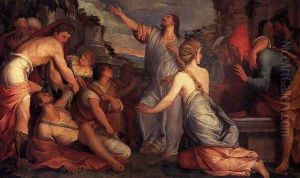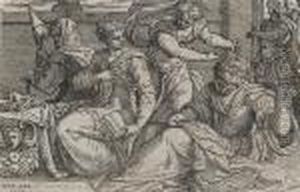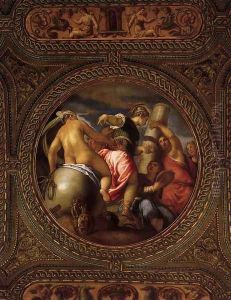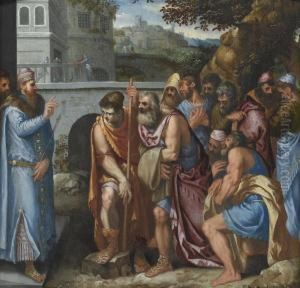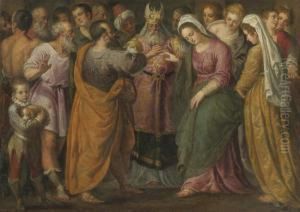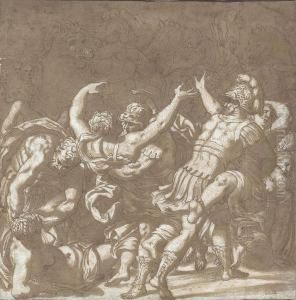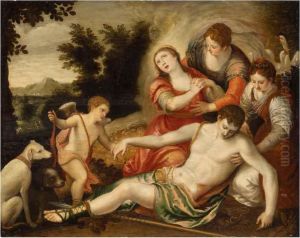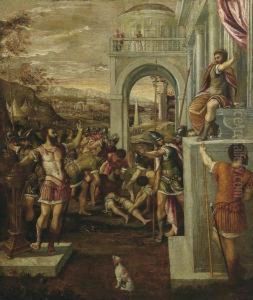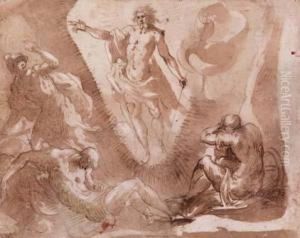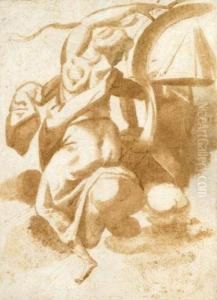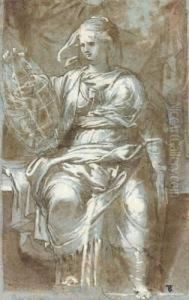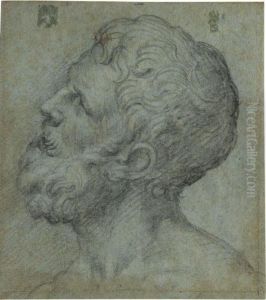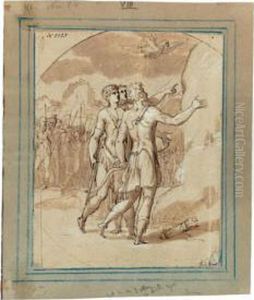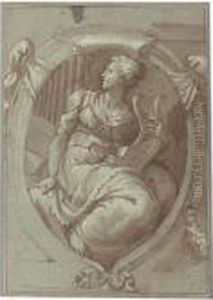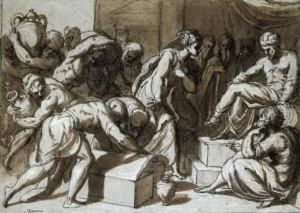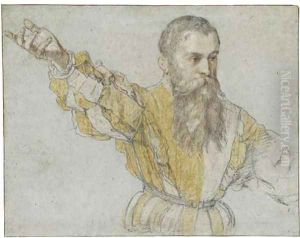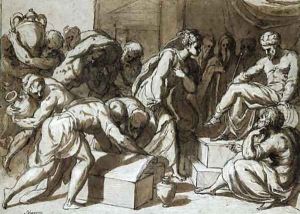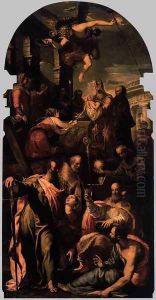Giuseppe Salviati Paintings
Giuseppe Salviati, also known as Giuseppe Porta, was an influential Italian painter of the Renaissance, born in Castelnuovo di Garfagnana, Tuscany, around 1520. He is often associated with the Venetian School, although his work also shows a blend of styles indicative of the broader Italian Renaissance movement. Salviati's early training is believed to have been under the tutelage of a relative, Francesco Salviati, or perhaps even more significantly, under the famed Jacopo Sansovino in Venice, which would explain his adeptness in both painting and architectural motifs.
Venice in the 16th century was a vibrant hub for artists, and Salviati's work was no exception to the rich cultural dialogue occurring at the time. His style is noted for its elegance, vibrant colors, and a keen attention to detail, characteristics that aligned well with the Venetian School's predilections. However, Salviati also spent a significant portion of his career in Rome, where he was influenced by the Roman manner, particularly the works of Raphael and his followers. This exposure is evident in his adept use of space and composition, blending Venetian color with Roman design principles.
Throughout his career, Salviati was celebrated for his religious and mythological scenes, often characterized by their dynamic compositions and rich narrative quality. His works can be found in many prominent Italian churches and institutions, including the Sala dei Cento Giorni in the Palazzo Farnese, Rome, and the church of San Francesco della Vigna in Venice, where his ability to convey complex themes through visual storytelling was particularly appreciated.
Despite his success, details about Salviati's life remain somewhat obscure, and his contributions have occasionally been overshadowed by his contemporaries. Nevertheless, his legacy lives on through his contributions to the Venetian School and the broader Italian Renaissance, where his works continue to be studied for their innovative blend of Venetian color and Roman compositional techniques. Giuseppe Salviati died in Venice in 1575, leaving behind a body of work that remains influential in the study of Renaissance art.
